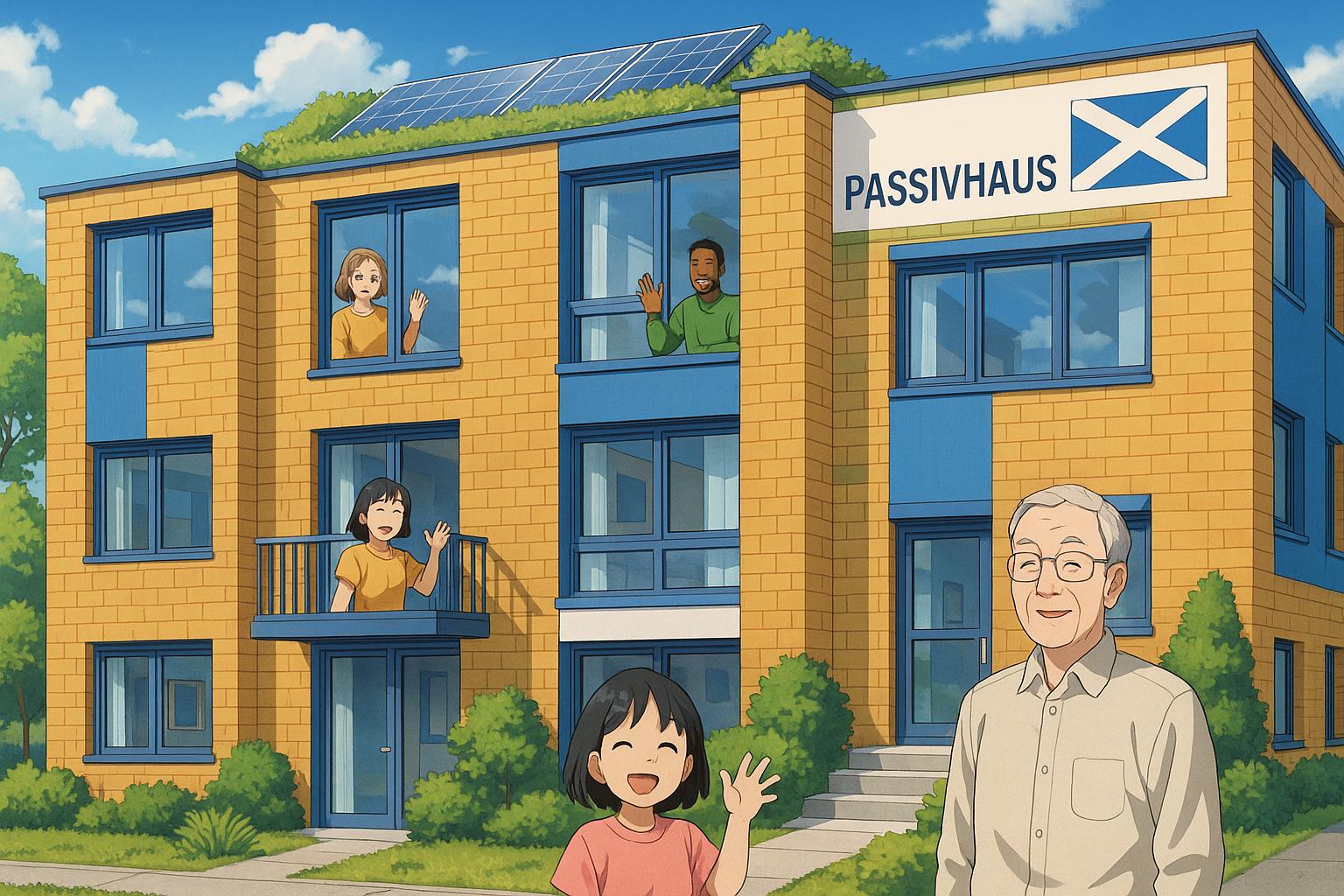Collette Miller’s exploration of the Passivhaus and EnerPHit energy efficiency standards highlights their relevance in the context of social housing, particularly as providers strive to align with net zero targets and enhance tenant well-being. Originating from the collaborative thinking of Bo Adamson and Wolfgang Feist in the 1980s, the Passivhaus standard was designed to create low-energy buildings that maintain comfortable indoor climates with minimal energy consumption.
Despite its promising objectives, the adoption of Passivhaus principles has been sluggish in the UK, with only about 1% of new housing projects meeting these standards. The UK Passivhaus Trust, however, is actively working to increase that figure to 10% by 2035, emphasising the need for a cultural shift in construction practices. Scotland has made notable strides, leading the way with a significant number of Passivhaus certifications, a situation likely to gain further momentum with the Scottish Government's plans to introduce a mandatory Passivhaus-equivalent standard by 2028. This anticipation urges social housing providers to integrate these standards into their energy efficiency initiatives now.
The stringent requirements of the Passivhaus standard include thermal bridge-free construction, mechanical ventilation with heat recovery, and an airtight building fabric, all aimed at creating a consistent indoor temperature with minimal energy input. Such designs not only enhance thermal comfort but also ensure quieter living spaces and improved air quality. Nonetheless, the realisation of these benefits hinges on occupant behaviour, necessitating that social landlords provide guidance to tenants on optimising their living environments.
Complementing the Passivhaus standard is EnerPHit, a framework tailored for retrofitting existing buildings to improve energy efficiency significantly. While less stringent, EnerPHit still requires the installation of high-performance windows, efficient heat generation systems, and adequate insulation to ensure a healthier indoor environment. The push for retrofitting is pivotal, especially as a considerable portion of the UK’s housing stock could benefit from energy efficiency strategies, contributing to broader carbon reduction goals.
Despite the advantages outlined, the journey towards Passivhaus certification is fraught with challenges. Administrative burdens can deter many organisations, particularly smaller social housing providers, as the certification process demands considerable resources for documentation, testing, and compliance. This is compounded by the limited number of certified professionals, often leading to delays and increased costs. Reports suggest that the initial capital cost of Passivhaus constructions can vary from an extra 8% to 25%, depending on the project's complexity and the local market conditions.
Moreover, while Passivhaus and EnerPHit-certified homes promise reduced utility bills and enhanced comfort for tenants, there is often an unclear correlation between certification and increased property value. The perception of a potential uplift in market value remains nuanced, with no definitive evidence to quantify the impact. However, it is widely acknowledged that energy-efficient homes can lead to greater tenant satisfaction and lower turnover rates, thereby benefiting social landlords in the long term.
As social landlords embark on improvements to meet these energy efficiency standards, several examples from Scotland shine a light on the practical implementation of Passivhaus and EnerPHit principles. Notable projects, such as Glasgow’s Springfield Cross—its largest Passivhaus development—and the ambitious retrofitting initiative by Renfrewshire Council, indicate a growing commitment to sustainable housing solutions.
In addressing equality and accessibility, social housing providers must also consider the diverse needs of tenants. Energy retrofits could inadvertently disenfranchise occupants with varying degrees of accessibility needs; thus, careful planning and inclusivity must form a core part of any retrofit strategy. The case for maintaining tenant rights during such works is imperative, as social landlords face legal obligations to ensure tenants are not unduly displaced or disadvantaged.
The horizon for Passivhaus in Scotland appears promising, particularly with the Scottish Government’s commitment to a net zero target by 2045. As the urgency surrounding climate change escalates, the drive to enhance energy performance in social housing is not merely a compliance issue but a vital component of social responsibility.
Ultimately, social housing providers will benefit from a balanced approach, weighing the principles of Passivhaus and EnerPHit against the realities of implementation. While formal certification may not be universally applicable, integrating these principles can lead to substantial improvements in energy efficiency, tenant satisfaction, and overall sustainability in the housing sector.
Achieving net zero in social housing will require collaboration, innovation, and informed decision-making—factors that social landlords must embrace as they navigate this evolving landscape.
📌 Reference Map:
- Paragraph 1 – [1], [2]
- Paragraph 2 – [1], [5]
- Paragraph 3 – [1], [4]
- Paragraph 4 – [1], [3]
- Paragraph 5 – [6]
- Paragraph 6 – [1], [7]
- Paragraph 7 – [3], [2]
- Paragraph 8 – [4], [1]
- Paragraph 9 – [1], [3]
Source: Noah Wire Services
